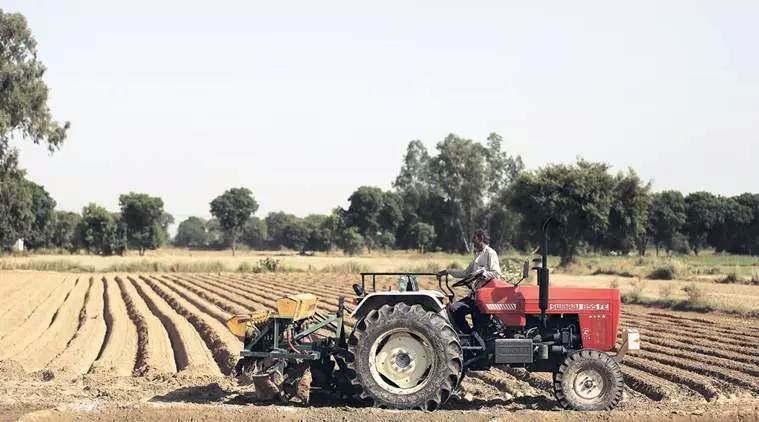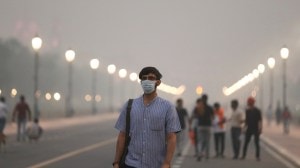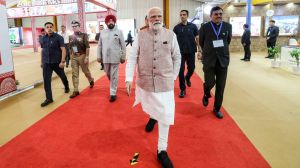 Sales have consistently fallen by over 14 per cent since March 2019, amidst weak farm sentiments and overall weakness in the rural economy.
Sales have consistently fallen by over 14 per cent since March 2019, amidst weak farm sentiments and overall weakness in the rural economy.
THE DECELERATION in the rural economy is showing up in the worsening slide in sales in the tractor segment, which had bucked the broader downturn in the auto sector to post a third consecutive year of double digit growth until March 2019.
As the rural demand continues to decline over factors such as shrinking credit disbursal by NBFCs, weak farm sentiment and delayed monsoon, the sales of tractors — which serve as a proxy for rural consumption, alongside two-wheelers, and are a key input in agriculture mechanisation — recorded the biggest monthly fall in production of over 32 per cent in June 2019.

Sales have consistently fallen by over 14 per cent since March 2019, amidst weak farm sentiments and overall weakness in the rural economy. With volumes representing a double-digit fall over the past three months, the industry recorded an over 32 per cent decline in production in June 2019 while sales, including exports, too were down 15 per cent.
Story continues below this ad
The correlation of tractor sales with agriculture GDP has increased from 0.3 over historical sample (2005-2017) to about 0.7 over the five years to March 2018, according to Bloomberg Economics data. To that extent, a decline in tractor sales is more worrying now than five years back.
This comes amid the third advance estimates of crop production indicating a slide in rabi production while kharif sowing has remained weak so far. According to rating agency ICRA, even as fears persist of a curb in lending amid weak farm cash flows, financing availability in the sector continues to remain inadequate amid the NBFC crisis.
Tractor sales for June of market leader Mahindra and Mahindra Ltd (M&M), which commands a 40 per cent share of the domestic market, posted a 19 per cent slide. M&M has been reporting a year-on-year dip in sales since December while Escorts Ltd has been posting a decline in sales from March 2019. For M&M, the slide in June sales comes on the back of double-digit decline in sales in April and May.
On the rural slowdown, Pronab Sen, country director for the India Programme of the International Growth Centre and former Chief Statistician of India, said that although agriculture is holding up in terms of physical volumes, the consumption breakdown is mainly originating from the non-agricultural segment in rural areas. This is likely to intensify and spill over to the agri side in the wake of the IMD’s forecast of monsoon precipitation in the ongoing southwest monsoon season, pegged at 96 per cent of long period average (LPA). While monsoon onset was delayed, the precipitation has remained weak in June, raising further concerns over the recovery of the rural economy.
Story continues below this ad
Over the last three years, the domestic tractor industry growth has stayed positive and bucked the progressively intensifying downturn in automobile sales on account of farm cash flows gaining from consecutive favourable crop cycles. Besides healthy farm cash flows, an improved haulage demand, as a result of investment uptick in infrastructure creation, coupled with the government’s farmer welfare programmes, provided support to tractor demand.
Since early this year, industry volumes have been under pressure on the back of weak rabi crop cash flows and depressed crop prices. The volume decline of 15 per cent in June 2019 represented the fourth consecutive month of double digit decline in volumes (on a YoY basis). While weaker rabi cash flows and a delayed harvest have been the primary reasons, fears of an adverse monsoon precipitation (amid a delayed monsoon onset) and a tightened liquidity scenario have also curtailed demand.
A report by Edelweiss said, “Q3FY19 was characterised by slowdown in automobile as well as consumer durable sectors. Sales growth of consumer staples, however, remained resilient largely on account of direct transfer schemes and government led initiatives. But, the cookie crumbled in Q4FY19 as the government, to manage fiscal deficit, massively slashed its expenditure. This triggered deceleration in the rural economy.”

 Sales have consistently fallen by over 14 per cent since March 2019, amidst weak farm sentiments and overall weakness in the rural economy.
Sales have consistently fallen by over 14 per cent since March 2019, amidst weak farm sentiments and overall weakness in the rural economy.






























